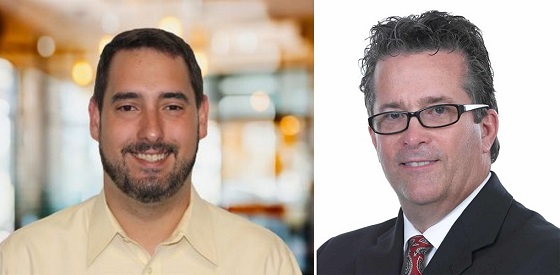With the landmark U.S. infrastructure bill recently being signed into law, we discussed its implications for the corrosion industry with Adam L. Christopher, manager of government relations at the Association for Materials Protection and Performance (AMPP), and Dan Adley, recently retired CEO of engineering consultancy KTA-Tator, Inc. (Pittsburgh, Pennsylvania, USA).
Topics include a legislative outline of the bill and insight into some of its major topics; what the infrastructure legislation means for the corrosion industry as a whole; what AMPP members can do to prepare themselves; and where people should go to find out more information about the bill and any opportunities.
See below for a partial Q&A transcript between Adley and AMPP’s Adam Christopher and Ben DuBose, and visit www.materialsperformance.com/podcasts to listen to the complete episode.
DuBose: What does the infrastructure bill mean for the corrosion industry at large?
Adley: This is a $1.2 trillion investment in physical infrastructure. To the best of my knowledge, every dollar of this is to go to physical infrastructure, in one of those many categories that Adam just outlined. Highways and bridges… transit, railroads, the energy grid, water and wastewater ports, maritime and water infrastructures, aviation, you can’t think of any of them that don’t involve materials of construction, where AMPP members have a role.
That role might be in making certain that the material selection and the physical design of these infrastructure projects is done in such a way that the asset is protected for as long as possible. Now, it all needs to be done in a sustainable manner. That has AMPP written all over it, from the front-end design, selection of materials, and the specification for the long-term corrosion protection systems.

AMPP has a role in the next step in making sure that the contractors who perform the work, and those that observe the quality of the performance, are trained, certified, and can perform that work so that these long-term benefits are achieved.
I’m not certain where, but I suspect on the tail end of the long-term operations and maintenance and management of these facilities, that AMPP or AMPP membership have roles in ensuring the long-term sustainable protection and management of the infrastructure we’re going to be investing in.
It’s huge numbers — $1.2 trillion overall, some of it over a 10-year (period), but with much of it concentrated in the first five years. There’s $550 billion within that in new infrastructure. So it’s not even maintenance. It’s new projects. I don't see a single aspect of that investment that doesn't create some role or opportunity for AMPP membership.
DuBose: So what can AMPP member companies, or even an individual, do to prepare themselves for this?
Adley: I’ll take the first crack at this, and I’ll tee it up for Adam to go a little bit deeper. But interestingly, Ben, we just got off of a group committee call of the (AMPP) Advocacy and Public Affairs Committee, and we were talking about goals and objectives for the upcoming years.
One of the overarching things we’d like to see is to motivate and engage AMPP members to be advocates for our association, and more importantly, our industry. It’s what we do as professionals, and I believe this law creates a unique opportunity for every individual member to get engaged.
Now, I’ll give you some ideas. One is calling your local and state representatives, be they a congressional representative, or a senatorial representative for the district you live in, or perhaps where your business is located in. Engage them in the conversation, because all of this funding is going to flow ultimately through the states. Some of which they have immediate control over, and others they have to apply for through grants. Those are going to create opportunities for AMPP membership to participate in.
Reach out to your local representatives, and just ask them simple questions: ‘How is our state receiving these funds? What’s its vision on how they should be dispersed? And are we incorporating sound corrosion design, management, and oversight provisions in the utilization of these funds, to ensure that our investment is sustainable?’
I think it’s an easy task. Our legislators at the local level, at least in my experience, seem to be inclined to have conversations with constituents. Because they know it’s important to them, and if your business is located there, it’s even more so.
It may inspire you. Once you get over the (potential) discomfort of reaching out and talking to a legislator, maybe bump it up, and you find your congressional representative or senatorial representative to the U.S. Congress and reach out to their offices. I doubt that you’re going to speak to the Congressman directly. Let’s not be naïve. But they will have someone within their office that deals with infrastructure. Ask to talk to them, and relay the same message. We want to make sure as AMPP, as an association, that these funds are used in a sustainable, beneficial way to the country. You’re there to help. The association is there to help.

Christopher: That’s extremely right, Dan. I would say that the most important thing to keep in mind is that the bill has been signed, but the process is not done. The process of implementing this massive investment of policy changes is going to take months and years into the future.
As a part of that, we as an organization, and you as a corrosion professional, want to be engaged, like Dan said. It’s to make sure that this funding and these changes and policies, they’re protected and they set us up for success in the future with asset integrity, with sustainability, and all of those key infrastructure buzzwords that are out there.
But the most important part of that is for us to be a part of the process, to make sure that the policymakers understand the need for actively planning and engaging, and making sure that things are protected. I think that’s one of the reasons our infrastructure is in the state of disrepair that it is in today. It’s that we haven't had that traditional focus of making sure the best policies are in place to make sure that assets are properly maintained. I’m probably preaching to the choir of all the listeners here, but that’s important for us to continue making sure that that our voices heard, and that your voice is heard.
On the other part of your question, on how an AMPP member make sure they’re ready for all these opportunities that are out there, part of my role at AMPP is to make sure that we are the resource to you all so that you can understand and see clearly the opportunities that are out there.
So over the next few weeks and months, we’re going to continue on this infrastructure message, not just with podcasts, but probably webcasts and other documents to help show you all the summaries of where funding is. We’ll also show where the priorities are, and provide you the information to participate in the process for you as an individual as well as for your businesses, now and in the future.
So I’d encourage you to be a part of the process and see this as an act of engagement. It’s to really make sure that the world that we create from this legislation is where we want to be. I wish we had more Dans, and we can get more Dans and recruit more Dans to help us in that process.
Materials Performance (MP) welcomed Dan Adley to its podcast series in December 2021. Listen to the complete interview at www.materialsperformance.com/podcasts.